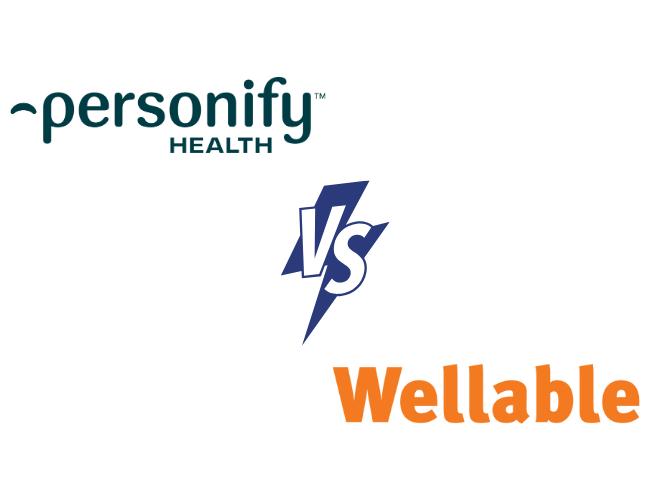A successful wellness program doesn’t just rely on engaging activities—it also hinges on a well-chosen reward structure that appeals to employees’ interests and keeps them coming back. Whether you’re aiming to inspire health-conscious employees or gently nudge to those beginning their wellness journeys, the rewards system you select can greatly influence your program’s success.
Since there are many reward models to choose from, the challenge lies in finding an arrangement that fits your company’s goals and budget while keeping employees engaged. This article will explore different reward structures, outline their differences, and help you choose the best system for driving authentic participation in your unique wellness program.
Why Do Rewards Matter In Wellness Programs?
A rewards program can serve as a powerful motivator and reinforce positive behavior change. When thoughtfully selected, rewards can elevate a wellness program from a “check-the-box” initiative to a meaningful cultural driver within an organization.
Boosts Engagement

Rewards give employees a tangible reason to join wellness programs, especially those who might otherwise be reluctant. Continuous programs that offer $200 or more per employee per year have been shown to increase engagement by over 60%. Nonetheless, even smaller budgets can stretch far—team prizes like catered lunches or useful company swag (e.g., branded yoga mats) motivate employees to regularly participate in wellness programs.
Elevates Company Culture
Aligning rewards with the company’s core values can make a wellness program feel more authentic and culturally relevant. For example, offering rewards through Global Giving, which allows employees to donate to charitable causes, adds a mission-driven component that aligns with many organizations’ values (especially those focused on corporate social responsibility).

Additionally, group rewards (e.g., catered team lunches, team outings) strengthen relationships and align with programmatic goals of increasing participants’ sense of community. By combining value-driven and community-building components into rewards, a program becomes more seamlessly integrated into company culture.
Enhances The Wellness Experience

Integrating rewards into benefits packages can help promote and increase the perceived value of the program. For example, some companies offer premium differentials (lower health insurance premiums for employees who participate in wellness activities). Others might provide lifestyle spending accounts (LSAs), gym reimbursements, or extra paid time off (PTO). These benefits-based rewards show a commitment to employees’ long-term well-being.
How Are Rewards Earned?
The way rewards are earned—whether through points accumulation, performance, or participation—directly influences motivation and engagement. To maximize impact, it’s often beneficial to vary reward structures within the program based on the specific activities or goals being incentivized, as each system offers unique advantages and challenges. However, no matter the structure, rewards must always feel fair and attainable to encourage widespread participation.
Points-Based Rewards
In a points-based reward system, employees earn points for completing wellness activities (e.g., attending fitness classes, tracking a certain number of meditation minutes). These points can then be redeemed for rewards.
Continuous wellness programs, which utilize a points-based structure, are effective because they create ongoing incentives for participation. They also provide autonomy—employees can accumulate points at their own pace and choose how to redeem them based on individual preferences.
Regularly update continuous programs with fresh themes, challenges, or initiatives to maintain interest over time. For example, introducing a new wellness focus each month—such as mental health one month and physical activity the next—prevents the program from becoming monotonous. Clear and consistent communication about updates to the program and how points are earned ensures employees are engaged, informed, and motivated to participate regularly.
Performance-Based Rewards

A performance-based system recognizes and compensates elite performers in a wellness program. For instance, employees might be rewarded for taking the highest number of steps in a month or for winning a fitness challenge.
This structure can push highly motivated employees to excel; however, it’s important to balance performance-based rewards with other methods to ensure that the program doesn’t inadvertently limit engagement to just the top achievers.
Participation-Based Rewards
Participation-based rewards encourage involvement regardless of performance or outcomes. Employees are rewarded for simply taking part in wellness activities, making them an inclusive way to foster broader engagement. For example, employees might receive a company-branded water bottle for signing up and participating in a hydration challenge.
This system is particularly beneficial for motivating employees who may not be as health-conscious or active. By lowering the barrier to entry, participation-based rewards encourage all employees to take steps—no matter how small—toward improving their well-being.
Event-Based Rewards

An event-based rewards system offers incentives for attending specific wellness-related activities or events (e.g., webinars, health fairs). Offering raffle entries for attending an event can drive broad participation and build awareness around health-related topics.
Consider rewarding active engagement (e.g., participating in discussions or completing follow-up activities post-event) and recognizing those who attend multiple events. This can deepen involvement and build momentum around health education over time.
Outcome-Based Rewards
Outcome-based rewards incentivize employees to achieve specific health goals, such as lowering cholesterol or getting a flu shot. This data-driven structure often uses objective measurements to determine if an employee has reached a goal. For instance, a company might reward employees who complete an annual physical through Wellable’s Clinical Event Verification tool.
While outcome-based rewards can be effective, they may also be more difficult to implement, as they require careful measurement and monitoring. It’s important to set realistic, attainable goals to avoid discouraging employees who may struggle to meet them.
What Types Of Rewards Can Be Offered?
Choosing the right incentives for a wellness program depends on the company’s goals, budget, and employee preferences.
Monetary Rewards

Monetary rewards are straightforward and universally appealing because they have immediate financial value and provide flexibility. They’re best suited for organizations seeking a versatile, customizable structure that can be adjusted to fit different budgets and employee preferences. Common monetary rewards include:
- Cash bonuses: Direct cash rewards, whether through payroll or deposit, provide maximum flexibility.
- Gift cards: Wellable’s Rewards Wallet provides access to nearly 1,000 global gift card brands, making it easy for employees to choose what best fits their needs—from groceries and home appliances to activewear and electronics.
- Charity donations: Employees can donate rewards to a charitable cause (e.g., through Global Giving) which is a meaningful option for companies that value service and generosity.
Benefit-Based Rewards
Benefit-based rewards provide long-term value by improving employees’ quality of life. These rewards support work-life balance, financial wellness, and healthcare. They’re ideal for companies with a more mature workforce or those focused on retention as they demonstrate a long-term investment in employees’ well-being. Benefits-based rewards include:
- Lifestyle spending accounts (LSAs): LSAs provide funds for lifestyle and wellness-related expenses, such as gym memberships, fitness equipment, or personal development courses.
- Additional paid time off (PTO): Extra PTO demonstrates a company’s commitment to work-life balance.
- Health plan contributions: Employers can ease employees’ healthcare costs through direct contributions to health savings accounts or payments towards insurance premiums.
- 401(k) contributions: Increasing contributions to 401(k) plans supports employees’ financial wellness.
Fitness-Related Rewards

Fitness-related rewards directly support and encourage physical activity and healthy habits. These tangible incentives align with wellness programs focused on improving holistic well-being. Fitness-related rewards include:
- Fitness equipment: Resistance bands, yoga mats, or wearable devices are practical rewards that support wellness programs focused on increasing activity.
- Fitness subscriptions: Subscriptions to virtual fitness classes or workout apps provide ongoing motivation for employees to maintain a healthy lifestyle.
- Gym memberships: Covering gym memberships or offering reimbursements encourages employees to maintain a regular fitness routine and integrate movement into their daily lives.
Experiential Rewards
Experiential rewards offer employees enriching experiences rather than material items. These rewards foster personal growth, connection between team members, and a sense of joy. Experiential rewards can include:
- Wellness activities: Mindfulness workshops, yoga sessions, or company-sponsored wellness retreats are excellent ways to reward employees while promoting well-being.
- Event tickets: Providing tickets to concerts or sports events can create memorable moments for employees and show that the company values their personal enjoyment outside of work.
- Team-building activities: Group activities can strengthen relationships between employees and promote collaboration.
Budget-Friendly Rewards

For companies with limited budgets, low-cost rewards can still make a big impact. Thoughtful, cost-effective options allow employers to recognize and appreciate employee efforts without overspending. They’re well-suited for organizations of all sizes, especially those looking to build a positive and supportive work environment without stretching budgets. Options include:
- Public recognition: Highlighting employee achievements in company-wide communications or meetings fosters a sense of accomplishment and boosts morale at no financial cost.
- Certificates: Awarding personalized certificates for wellness achievements is a simple yet meaningful way to celebrate employees’ hard work.
- Company swag: Offering branded merchandise like water bottles, t-shirts, or notebooks is a low-cost way to reward employees while reinforcing company pride.
Tailoring Rewards To Any Budget
One of the biggest advantages of wellness programs is their flexibility—there’s no one-size-fits-all solution, and that extends to a reward structure. While some companies may have the resources to offer substantial rewards, even organizations with tighter budgets can create meaningful, impactful programs.
For larger budgets, a mix of higher-value rewards (e.g., gym reimbursements, additional PTO) can drive strong engagement. For smaller budgets, offering recognition-based rewards or low-cost options like company swag can still create a positive impact on program participation and organizational culture.
One of the most effective ways to stretch a limited budget is by implementing a tiered incentive system. This model allows companies to offer multiple reward levels, so employees can earn progressively higher rewards based on their participation or performance. A tiered system might offer small rewards for reaching basic goals while reserving more expensive rewards for bigger milestones. This helps control costs and keeps employees motivated as they continuously work toward their goals.
Still Not Sure Which Rewards Program Is Right or You?
Choosing the right rewards structure depends on factors like employee preferences, program goals, and budget. For additional support, schedule a free demo to explore different options that will drive engagement, align with your company’s wellness goals, and foster a culture of health.












